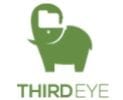In my last Blog post, I briefly explained the what a Chatbot is, gave examples of different kinds of Chatbots and explained how to build one using the Microsoft Bot Framework. In this Blog, I shall add my insights into how customer engagement and interaction on social media platforms is being altered due to the entry of “Chatbots”.
Chatbots as the factotum for all business needs
The first thing to understand about chatbots is that most won’t introduce new capabilities; instead, brand chatbots will centralize where and how customers engage, using social media as an operating system. Since early 2000’s social media platforms have become the favored communication tool for several companies — first through weblogs, then eventually through social networks such as Facebook and Twitter. Although the capabilities and sophistication have continued to evolve, at its core, social media has remained a platform to facilitate human-to-human communication.
But then the Robots moved in…….
Robots, though more specifically Virtual Robots or Chatbots powered by artificial intelligence (AI), are transforming the way brands do business with their customers. With chatting being so popular, it’s no surprise that our world is full of Chatbots. Sometimes they are made just to replace real-world company, sometimes they have specific functions.
Chatbot hype went through the roof when Telegram’s bots platform got a full-scale API. Lots of businesses immersed themselves in making chatbots then: customer service bots, support bots, training bots, information bots, weather bots, companionship bots, and what have you!
Consumers will engage with bots in three ways: content consumption, customer service and transactional engagements. Social media is already part of many of these activities between brands and consumers, but social media acts as a gateway to direct consumers to the brand website, blog or separate channels. Instead of using social media as a portal, consumers can read and receive information, ask technical questions and even make purchases from one Chatbot.
As bots become equipped to handle text content, the human side of brands and consumers will gravitate toward new, richer ways to engage, including virtual and augmented reality. Companies across a wide variety of industries are building these tools on popular messaging apps like Facebook Messenger, Slack, Kik, and Hipchat, as well as on their own websites and apps.
However, realistically, there are only five companies in the world today that can make a “Global Chatbot” and benefit from it: Apple, Google, Microsoft, Amazon, and Facebook!
Are you intriguiged to learn how to build a Chatbot?
Then JOIN us for a FREE WEBINAR on April 13, 2017 from 10:30 AM to 11:00 AM PST.
In this Webinar, we will show you step by step how to create a Conversational Chatbot using Microsoft Bot Framework and Language Understanding Intelligent Service (LUIS) and enabling it for any website through Web Chat channels.
While the Azure Bot Service simplifies building and deploying Bots, LUIS (Language Understanding Intelligent Service) is a fascinating tool, one of the more important elements driving free-form conversational bots. It’s designed to interpret the intent of a user’s conversation. Hence, these are called “conversational chatbots”!
In this Webinar, you will learn how to create a ChatBot using Microsoft Bot Framework and LUIS (Language Understanding Intelligent Service) and enable it on your website through Web Chat channels.
- Live Demo
- Show how to develop Bot
- Incorporate LUIS in Bot for natural language understanding
- Enable Bot on website as web chat
Technologies Showcased:
- Microsoft Bot Framework
- LUIS

The ThirdEye Team





